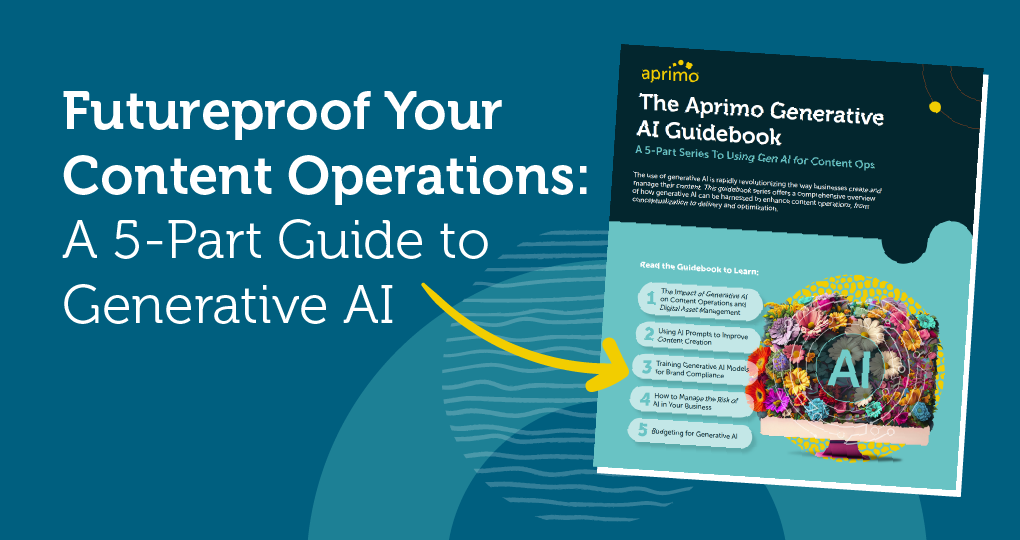Storytelling in the Digital Age: Leveraging DAM to Craft Compelling Narratives

Part of the reason brands like Nike and Apple have become household names is that they have perfected the art of storytelling. To this day, people talk about Apple’s iconic “1984” Super Bowl commercial. The same is true for the Coca-Cola “Share a Coke” and Nike’s “Just Do It” campaigns.
These companies have crafted narratives around their brand that resonate with people on an emotional level. Storytelling has become even more integral in the digital age. People are drawn to brands that can tell powerful, engaging stories.
The method of storytelling has changed, though. Previously, it was limited primarily to print advertising, TV and radio commercials, and billboards. Today, social media and digital content marketing are part of the mix, too.
The evolution of storytelling into the digital realm means there’s more data to organize and store. Digital asset management (DAM) has emerged as a solution for brands that need a centralized system to store, manage, retrieve, and distribute their digital assets across various platforms.
Below, we look at the importance of a digital asset management system in brand storytelling. We also discuss how brands can create compelling narratives with a DAM system.

Introduction to Digital Asset Management (DAM)
Think of digital asset management software as your brand’s virtual library. It stores all of the assets you’ll need in your campaign.
Everything from the image you’ll use for billboards to the posts that go on TikTok or Instagram can be stored in the DAM platform. Even the copy for your ads can be housed in the system ? no more scouring through folders or email threads for the correct file.
DAM software helps:
-
Create a centralized storage system
-
Streamline collaboration and workflow processes
-
Ensure consistent branding
-
Enhance access controls and security
-
Save costs and time
-
Integration with business tools
-
Scale your creative strategy
The Marriage of Storytelling and DAM
How does a DAM platform and storytelling go hand in hand? Let’s explain with an example.
Snickers launched a campaign called ”You’re not you when you’re hungry,” highlighting the tagline by showing people acting out of character because they’re hungry. We saw Betty White playing football, and she was not so lovely. Then, there was Rowan Atkinson playing his popular Mr. Bean character at a monastery.
The point was that people’s ”hangry” alter egos come out when they’re hungry. Snickers helps you return to your usual, well-mannered self.
The decade-long campaign must have a lot of digital assets. From videos and images to copies of ads and social media posts, all of it would have come from a DAM system.
Here’s how DAM streamlines such a process:
-
Content creation: First, you create content and store it in the DAM.
-
Approval and review: The content is reviewed and approved by the appropriate parties before being published.
-
Distribution: Once approved, the content is distributed to the proper channels.
-
Analytics: You can check how each content performs through the DAM dashboard.
-
Retrieval: If you need to revisit published content or reuse it for future campaigns, you can retrieve content by searching for it using metadata.
These DAM features allow you to integrate storytelling principles with DAM practices. These principles include:
-
Consistency: Via automated approvals and version control in DAM
-
Brand alignment: By housing all brand assets in one central location for all teams to access and use as inspiration or references
-
Efficiency: Allowing for faster content creation, approval, and distribution with DAM’s streamlined processes
-
Data-driven decision-making: With DAM’s analytics dashboard
These interconnected features enhance the storytelling experience for brands. Without a DAM platform, there would be a lot of going back and forth and possible duplicates. Who knows how many lost or outdated versions of assets could exist without a central DAM system?
Once a DAM system gets involved, you can avoid all these pitfalls. DAM systems also have robust security features, so you can rest easy knowing your intellectual property is secure.


Crafting Compelling Narratives with DAM
When a brand has to create storylines and bring them to life as digital assets, a DAM can be a game-changer. Why? Because it does a lot more than just provide storage.
It’s a one-stop shop for digital asset management. You start with asset storage. Then, you go on to edit and manipulate those assets, adding layers of creativity and complexity.
You can add different versions of the same asset and narratives around it. Since all teams are present in the same place, they can collaborate on the asset, ensuring it fits the overall brand narrative.
While your campaign is up and running, you can measure performance metrics through the DAM software, too. If you’re not getting the desired results, tweak the asset and watch how it performs in real time.
The analytics let you customize the storytelling approach based on your audience’s preferences. For instance, if the numbers show that a particular asset is resonating with your audience, you can create more content in a similar vein to continue building that connection. On the other hand, if a certain asset, such as long-form video, isn’t driving engagement, you can switch to short-form content or try a different format altogether.
Optimizing Storytelling Strategies with DAM
One way to up your DAM-backed storytelling campaigns is to optimize your assets using the software. Here’s how:
-
Metadata tagging: Suppose you’re an athletic wear brand and have created a campaign for your winter collection. You can tag your assets with relevant information like the date, time, location, and models’ names.
-
Categorization: Next, you can sort your assets into folders depending on the media type, format, and theme. For example, all your 9:16 landscape videos can go into an ”Instagram Stories” folder, while all your static ads can be under an ”Ads” folder. The still images of your products can have a separate folder.
-
Automated approval: Don’t fall into the hassle of a chain of 10 emails to get one piece of content approved. Instead, use the automation features in your digital asset management software.
-
User-generated content: Businesses often don’t have enough space in their content management systems to house user-generated content. But a DAM system lets you create a separate category for UGC. You can simply retrieve and use the content in your campaigns while crediting the users.
Once your campaigns are in action, you can monitor their performance through the DAM analytics dashboard. Use the data insights to refine your storytelling tactics. If something isn’t working, change it. And if it’s doing the job, push out more of those narratives.
You can take your storytelling efforts up a notch with Agile storytelling techniques. For instance, use DAM for backlog management. Tag and categorize all your digital assets based on theme or priority. The next time your team needs inspiration or quick content, it has a ready-made repository from which to pull content.
Similarly, DAM facilitates iterative content development. You can leverage annotations and version control features in DAM to track changes and make decisions about which version of an asset to use in your campaign.
s.





